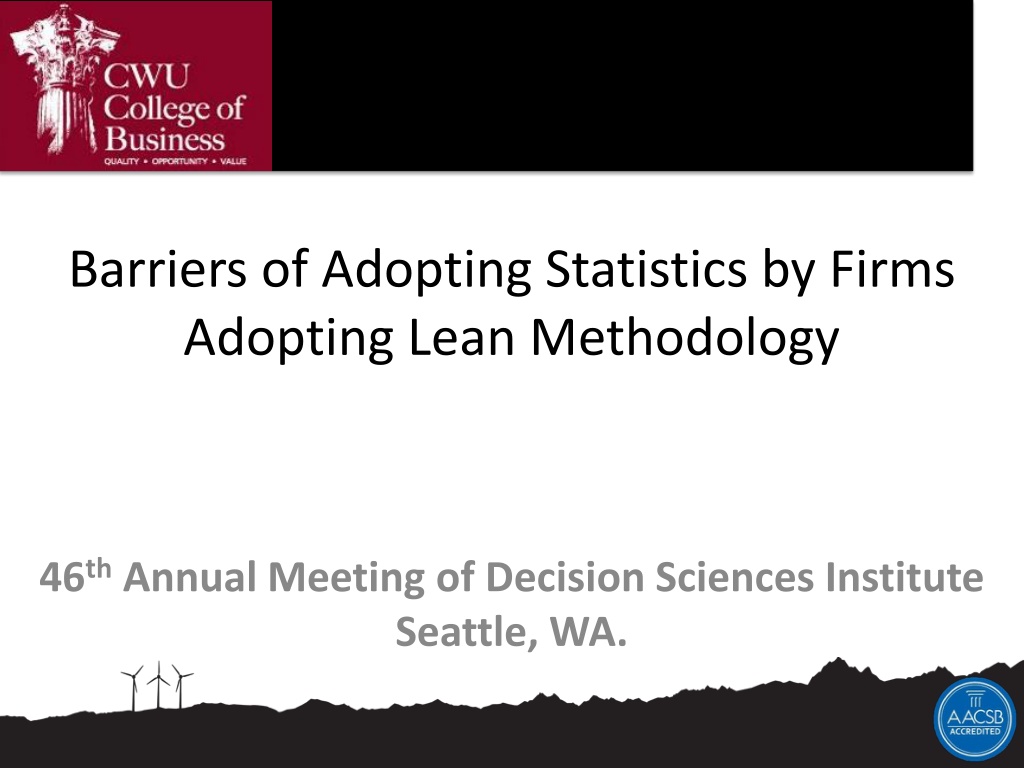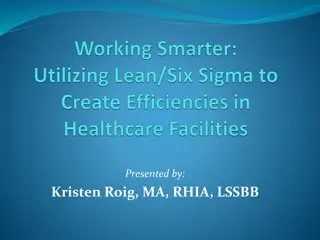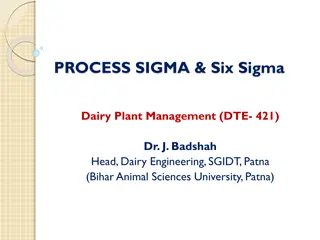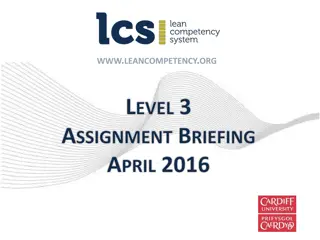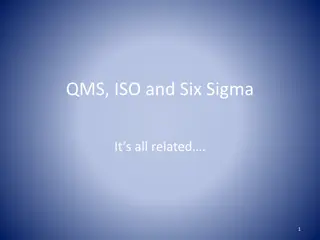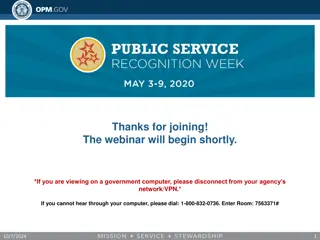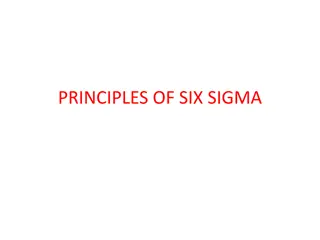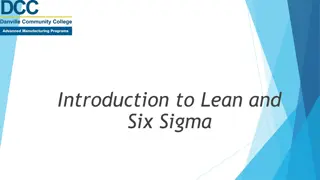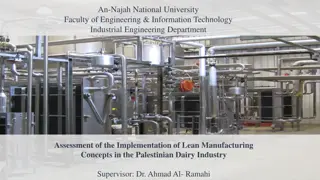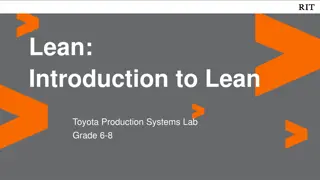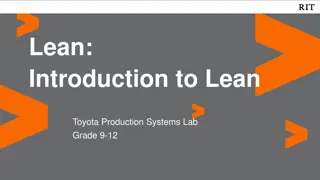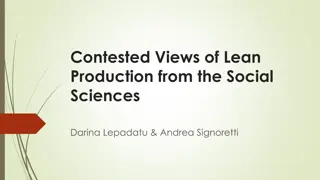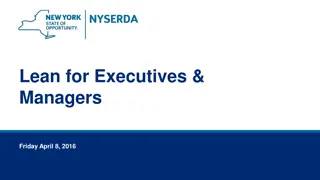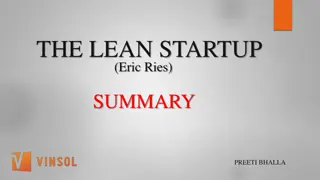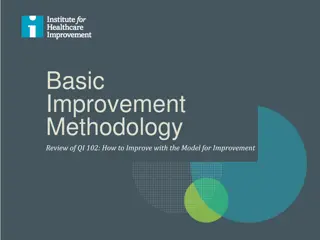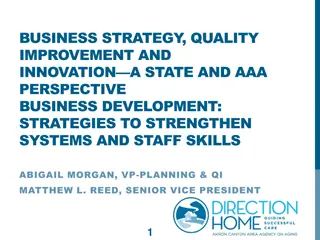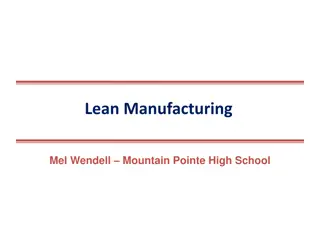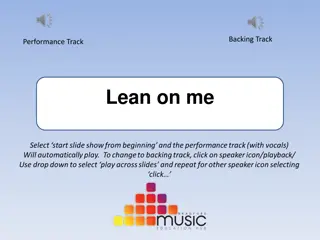Lean Six Sigma Methodology for Business Excellence
Lean Six Sigma methodology offers a strategic approach to optimize business processes, reduce costs, enhance quality, and improve customer satisfaction. This efficient methodology focuses on eliminating waste and defects to drive revenue growth and profitability for organizations. With a background in business administration and extensive experience in supply chain and logistics, the speaker discusses barriers to adopting statistics by firms implementing lean methodologies.
Download Presentation

Please find below an Image/Link to download the presentation.
The content on the website is provided AS IS for your information and personal use only. It may not be sold, licensed, or shared on other websites without obtaining consent from the author. Download presentation by click this link. If you encounter any issues during the download, it is possible that the publisher has removed the file from their server.
E N D
Presentation Transcript
Barriers of Adopting Statistics by Firms Adopting Lean Methodology 46thAnnual Meeting of Decision Sciences Institute Seattle, WA.
Discussion Points My Background Lean Six Sigma Methodology The Problem Define Measure Analyze Improve Control
My Background Bachelor s & Masters in Business Administration from India (1996) Worked in GlaxoWellcome India in its export department & started own consultancy firm (2000) Ph.D. in Supply Chain & Logistics from University of Maryland, College Park Worked in University of Kentucky, Lexington; Indian Institute of Management Indore; Qatar University, Doha and Central Washington University, WA.
My Background The Lean Six Sigma / Operational Excellence bug at KY thanks to Toyota, Georgetown. Faculty advisor and as an independent consultant for supply chain, inventory management, and lean and six sigma management projects: ThyssenKrupp (4), Fastenal (2), Procurement & Contracts (CWU) (8), Pexco (5), Center for Advanced Manufacturing of Puget Sound (8), Hopunion (1), Wildcat Shoppe (1), Genie Industries (3), C H Robinson (1), Liberty Bottleworks (1), Lexmark (8), Humana (4), United Technologies (4), Valvoline (4), Brown-Forman (4), O Charley s Restaurants (4), Ryder Systems (3), Tempur-Pedic (3), Alltech (2), Brunswick Boat Group (1), Kyocera (1), and Vascor (3), LeanCor (1), Kaba Mas (1), Lexington Fayette Urban County Government (1), Papa Johns (1), Ryder (3), Sylvania (1), ACS (1), Central Bank (1), Hitachi Automotive Products (1), and Scientech Technologies Pvt. Ltd. (2) among others.
Lean Six Sigma Methodology The objective of every organization is to increase revenue / profitability / customer service levels and reduce costs. Lean Six Sigma is an effective methodology (way of life) to reduce costs. Benefits of both Lean (eliminate wastes) and Six Sigma (reduce defects).
Lean / Six Sigma Focus on improving processes to achieve positive business results Reduction in costs Increase in quality Improvements in customer satisfaction A process is a collection of interacting components that transform inputs into outputs.
Six Sigma Philosophy Cause Effect relationship Y = f(X)s Variations exist in nature Common cause (random) variation Special cause (assignable) variation Eliminate Special cause variation Eliminate defects through use of statistics rather than through inspection Doing business that focuses on continuous improvement of processes (Repetitive processes)
The Need for Lean When capable people with good intentions meet bad processes, bad processes win 9 times out of 10. - General Jim Mattis (CWU 72) We get brilliant results from average people managing brilliant systems. Our competitors get average results from brilliant people working around broken systems Fujio Cho, Chairman Toyota Motors
The 7+1 Wastes T Transportation I Inventory M Motion W Waiting O Over-production O Over-processing D Defects T Talent (under-utilized)
The Problem Lean: Doing the Right Things 6 Sigma: Doing Things Right
Lean Six Sigma Fusion Lean Six Sigma Focus Improve system efficiency - improving work flow - stability of processes Improve process effectiveness - Reduction of variation Goal Eliminate Waste Reduce Defects Emphasis Value to customer Quality to customer Tools VSM, 5S, Kaizen, Flow & Pull, Takt Time, Kanban, 8 wastes, Value Add analysis FMEA, Statistics, DPMO, Pareto, DOE, CTQ Common Tools Cause & effect diagrams, visual controls, standardized work, process mapping
Define Purpose & Deliverables (Y) Articulate the business problem (current state) Articulate the business opportunity (future state) Determine scope of the problem What is in scope What is definitely out of scope Build the team Prepare data collection plan
Define: Concepts & Techniques Voice of Customer (VOC) & CTQ 6 Sigma Project Charter - Tie A3 Thinking - Lean Team roles & responsibilities - Tie SIPOC - 6 Sigma
Measure Purpose & Deliverables (Y) Identify available data and its accuracy Identify critical measures of inputs and outputs Execute data collection plan Describe the process with data and facts
Measure: Concepts & Techniques Genchi Genbutsu (Observe the practice) - Lean Process Maps Tie but . Calculate Yield Throughput 6 Sigma Categorize activities as value added / non-value added / business value added - Lean Value Stream Maps - Lean Compute Takt time - Lean but .
Measure: Concepts & Techniques Compute Descriptive Statistics - 6 Sigmabut . Appropriate Control Charts (Control limits) - 6 Sigma Process capability (specification limits) - None Run charts - None Validity of the measurement system Gage R&R - 6 Sigma
Analyze Purpose & Deliverables (X) Find out the root causes Establish causal relationship Y = f(X)s
Analyze: Concepts & Techniques Lean strives towards stability of the processes. Do not confuse stability with capability. Customers normally feel the instability of the internal processes
Analyze: Concepts & Techniques 5 Why Analysis - Lean Pareto Analysis - Tie Fishbone Diagram - Tie Cause & Effect Matrix - Tie Failure Mode and Effects Analysis (FMEA) - Lean Hypothesis testing - 6 Sigma Regression - 6 Sigma
Improve Purpose & Deliverables (X) Move the causes or Xs in the favorable direction Establish guidelines, policies, counter measures on the Xs
Improve: Concepts & Techniques Stop production so that production never has to stop. - Lean Proverb SPC is based on the fact that defects will happen. Therefore we have powerful statistical tools to measure the defects. Lean goal To detect mistakes and prevent defects. There is a big difference between mistake and defect. People will make mistakes, however a mistake becomes a defect when it is passed on to the next step (internal / external customer) in the process.
Improve: Concepts & Techniques Jidoka (Autonomation) - Tie Poka Yoke - Lean Brainstorm - Tie Visual management - Lean 5S (Sort, Set, Shine, Standardize, Sustain with Safety) - Lean Design of Experiment (DOE) - 6 Sigma
Control Purpose & Deliverables (Y) Make Standards visible and simple Train and teach new standards Institute & monitor discipline of process Measure and verify outcomes Plan Do Check Act implementation Transfer ownership to process owners
Improve: Concepts & Techniques Control charts with process capability and run chart - 6 Sigma Measure & Monitor the Xs - Tie Dashboard of future metrics - Tie Documentation - 6 Sigma but Audit - None
Way Forward Call it Operational Excellence Have the operators practice the Lean techniques while the managers need to be more data driven Introduce descriptive statistics to the operators Firms will be more Lean or Six Sigma oriented based on their culture Hire the right people.
